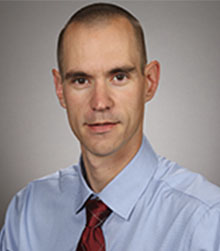Deep Learning/AI and NIF Science

Brian Spears
7/31/2019
Abstract:
Machine learning is the science of using computers to find relationships in data without explicitly knowing or programming those relationships in advance. Over the last few years, machine learning has found increasingly broad application in the physical sciences. This most often involves building a model relationship between a dependent, measurable output and an associated set of controllable, but complicated, independent inputs. The methods are applicable both to experimental observations and to simulation databases. We will present an overview of current techniques in machine learning – a jumping-off point for interested researchers to advance their work. We will discuss supervised learning techniques for modeling complicated functions, beginning with familiar regression schemes, then advancing to more sophisticated deep learning methods. Next, we will cover unsupervised learning and techniques for reducing problem dimensionality. We’ll show example applications from both magnetic and inertial confinement fusion, including some current state-of-the-art research. We will finally point out some limitations to modern machine learning and speculate on some ways that practitioners from the physical sciences may be particularly suited to help.
Bio:
Brian Spears is a target design physicist in the inertial confinement fusion (ICF) program at Lawrence Livermore National Laboratory. His current work focuses on the intersection of experimental science, high-performance simulation, and machine learning. Brian leads a Laboratory-wide effort aimed at developing deep learning methods for many missions. He has designed ICF experiments for almost 15 years, including the first cryogenic layered experiments at the National Ignition Facility. He developed new ICF ignition metrics using the first large-scale ensembles of 2D ICF simulations and data science techniques. Brian completed his PhD at the University of California, Berkeley where he studied topological methods for high-dimensional dynamical systems. He also holds a BS in mechanical engineering and a BA in liberal arts from the University of Texas at Austin. When not doing science, he can be found racing his bike or chauffeuring his two daughters to swim and gymnastics.



